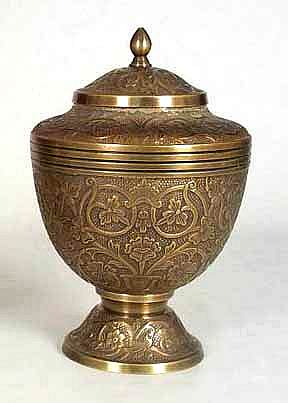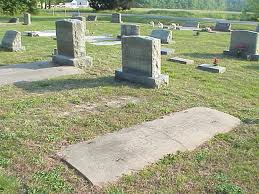 As a theologian and church historian who teaches courses on all of church history and electives on the early and medieval church, I constantly encounter a number of falsehoods, fabrications, and exaggerations floating around in popular [Christian] culture. They’re preached from the pulpit, taught in classrooms, shared in Bible studies, and printed in books. (I’ve even heard them parroted by colleagues who should know better.) Each of the following twelve myths could be expanded into full-length essays and even books, but for the purposes in this essay, a quick, brief introduction and correction is all that’s necessary.
As a theologian and church historian who teaches courses on all of church history and electives on the early and medieval church, I constantly encounter a number of falsehoods, fabrications, and exaggerations floating around in popular [Christian] culture. They’re preached from the pulpit, taught in classrooms, shared in Bible studies, and printed in books. (I’ve even heard them parroted by colleagues who should know better.) Each of the following twelve myths could be expanded into full-length essays and even books, but for the purposes in this essay, a quick, brief introduction and correction is all that’s necessary.
1. The Substitutionary Atonement
Myth: Penal substitutionary atonement was first articulated either in the medieval period by Anselm of Canterbury or during the Reformation. The early church fathers held to the Christus Victor theory or some other non-penal substitutionary theory of the atonement.
Fact: Substitution—and even penal substitution—is one of several explanations of the atonement that go all the way back to the earliest centuries of the church. These various explanations were not mutually exclusive, but often held simultaneously with other explications by the same people. Numerous fathers and theologians of the early church and medieval period refer to Christ’s death as a sacrificial substitute, taking the penalty in place of sinners. The Reformation did emphasize and centralize the penal substitutionary explanation, but they did not invent it.
2. The Selection of the New Testament Canon
Myth: The early church fathers and ecumenical councils of the church selected the books of the New Testament canon based on strict criteria of antiquity (Is it old?), apostolicity (Is it written by an apostle?), orthodoxy (Does it teach the truth?), or other reasonable standards to determine whether each book belonged in the canon.
Fact: Though various local regional councils published lists of Old and New Testament books, no ecumenical council ever voted on the New Testament canon, and there is no record of church fathers or councils sorting through books to form a canon. The criteria such as antiquity, apostolicity, and orthodoxy were sometimes used to explain why certain books had always been received as canonical and why others were not, but they were never used as tests to determine canonicity.
3. Constantine’s Reinvented Christianity
Myth: Constantine’s Council of Nicaea in 325 forced the Church to decree that Jesus is fully God, after which this orthodox Trinitarian theology was enforced throughout the Empire as law. Before that the church had a vague view of Jesus or tolerated diverse views of who Jesus was.
Fact: Christians had consistently confessed Jesus as both God and Man since the first century. The Arians who taught that the Son was a created being were out of step with what the church had believed from the beginning. Constantine’s influence over the Council of Nicaea was relatively minimal and related to what technical language to use to best explain what the church meant by its confession of Jesus as God. Furthermore, the imperial powers after the Council of Nicaea (325) and before the Council of Constantinople (381) were often in official support of Arianism and against orthodoxy! In fact, for several decades the Emperors persecuted orthodox Trinitarians rather than supported them.
4. Salvation by Grace through Faith
Myth: Martin Luther was the first person to articulate the doctrine of salvation by grace through faith. Prior to that the church had long believed salvation was by faith and good works.
Fact: The doctrine of salvation by grace through faith has always been the view of orthodox Christians. The issue is whether the grace of salvation also produces works with faith . . . and whether the works produced by grace and faith result in salvation or are the result of salvation. Luther’s emphasis on salvation by grace through faith alone was centralized and emphasized more than any of his predecessors, but even prior to Luther other late medieval theologians expressed similar views.
5. The Early Church’s Self-Identity
Myth: The church of the first few centuries had a vague, undefined understanding of the difference between orthodoxy and heresy, and most church fathers would not be regarded as orthodox by today’s standards.
Fact: Christianity has always clearly and unambiguously held to certain central and foundational tenets summed up in early writings, hymns, confessions, and creeds. Though the earlier Christians tended to tolerate (or even celebrate) more diversity over non-central issues than the later medieval church, they had a clear and uncompromising view of the boundary between orthodoxy and heresy—much clearer, in fact, than many modern Christians.
6. The Inerrancy of Scripture
Myth: The doctrine of the complete inerrancy of Scripture is a recent development birthed in the Fundamentalist reaction against modernist liberal extremes in the nineteenth century. Prior to that, most church fathers and even Reformers allowed for a more dynamic view of Scripture’s truthfulness that allowed for errors by the human authors.
Fact: Though many had a dynamic understanding of the interpretation of Scripture that allowed for allegorical and symbolic meanings intended by the divine Author, no church father, medieval theologian, or mainline reformer ever corrected the assertions of Scripture in any matter. They believed in the complete inerrancy of Scripture and its absolute doctrinal and practical authority.
7. The Dark Gap of History
Myth: There is a dark historical gap between the writing of the New Testament in the first century and the rise of the Catholic Church, during which we know hardly anything about what early Christians believed and practiced.
Fact: There is no historical gap between the New Testament and the rest of church history. We have documentary and archaeological evidence from every generation from the first century forwards, leaving us with a good picture of what Christians believed and practiced. We always wish we had more information, of course, but there is no gap.
8. From the Sabbath to Sunday
Myth: The earliest Jewish Christians worshipped on the Sabbath (Saturday), but the Gentile Church changed the day of worship to Sunday.
Fact: Even the earliest Jewish disciples of Jesus during the apostolic period in the first century commemorated Christ’s resurrection every Sunday. Though most Jewish Christians also continued to observe the Sabbath, the first day of the week (Sunday) was the normal day of gathering for corporate worship because that was the day on which the Lord was raised.
9. From Simple Christ-followers to Dogmatic Christendom
Myth: The earliest church was simple, spontaneous, informal, and without liturgy and fixed leadership structures . . . but as the church grew it became more complex, rigid, formal, liturgical, and hierarchical.
Fact: From the first century onwards, local churches followed liturgies, recited doctrinal confessions, and submitted to ordained pastors and teachers. Worship was formal and solemn. Though the early church could not be accurately described as “informal,” compared to later centuries it was certainly “less formal.” And although the church was never without authoritative leaders, its hierarchy did become more and more complex. However, the earliest centuries enjoyed both fixed elements and flexible forms of worship from place to place.
10. Christianity without a Canon
Myth: There was a period of fifty to 150 years after the New Testament was written during which there was no functional New Testament canon; the church had to rely on oral tradition, confessional summaries, and church leaders for doctrinal authority until the New Testament took its authoritative place next to the Old Testament.
Fact: From the moment letter or book was written by a first century apostle (e.g., Paul) or prophet (e.g., Silvanus), it functioned as “canonical” within the Christian communities. There was never a time after the apostles during which the various churches were left without written authoritative New Testament writings. It is true, however, that there was a period of time during which many churches didn’t have a full New Testament canon with all twenty-seven books. Rather, they had between one and two dozens books functioning as the doctrinal and practical standard. By the year 150, however, most churches had a collection of perhaps two dozen New Testament books functioning with apostolic and prophetic authority.
11. The Apostasy of the Church
Myth: Shortly after the apostles, the church experienced a sudden departure or apostasy away from the pure faith of the New Testament. It took the Reformation to rediscover and retrieve the purity of the early church.
Fact: Though Christianity developed and changed over the centuries, the process was slow and gradual. There are actually ups and downs in the history of the church with regard to doctrinal fidelity, spiritual vitality, and moral integrity. Though different parts of the church apostatized, and different ages saw greater corruption and doctrinal infidelity, there have always been pockets of light and a remnant of faith and obedience throughout the history of the church.
12. The One True [Underground] Church
Myth: The true church founded by the apostles had to go “underground” shortly after the first century and especially during the Dark Ages in order to preserve the truth. They appear occasionally on the radar of history as “heretics” persecuted by the official Roman Catholic Church and mainline Protestant denominations.
Fact: There is just as much historical evidence that the one true church flew to Mars as there is evidence for a true church existing secretly throughout the centuries. When confronted with this lack of historical evidence, advocates of this myth say that the persecutors destroyed the evidence. Though a great plot for historical fiction writers, the idea of an unbroken line of independent churches outside either the Western and Eastern organized catholic churches is simply not true.





